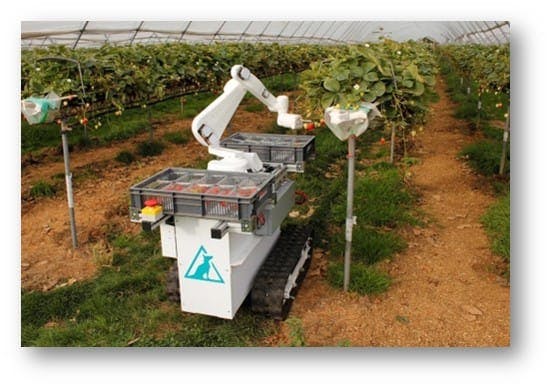
Robotics: A Potential Savior to Many Industries
While attending PACK EXPO, I couldn’t help but notice the increased emphasis on robotics; especially in areas of the manufacturing process that traditionally utilize significant amounts of manual labor. In further discussions with other attendees, an overriding theme was the difficulty of finding labor in today’s market. Subsequent research supported my observation, with construction and agriculture appearing to be two of the hardest hit industries.
Construction – A Foundation for Robotics

According to the National Association of Home Builders, the construction sector lost more than 2.3 million workers (40% of the workforce) between April 2006 and January 2011. The share of builders reporting serious labor shortages skyrocketed from 21% in 2012, to 46% in 2014, 52% in 2015, 56% in 2016 according to Construction Dive. Data from the Bureau of Labor Statistics confirms that almost 200,000 construction jobs were unfilled in the United States as of February 2017.
Equipment giant Caterpillar recently invested $2 million in Fastbrick Robotics to develop and sell the Australian company’s robotic bricklaying technology. These construction systems are typically able to finish their tasks more efficiently and quickly than their human counterparts. Construction companies may, therefore, benefit from certain automated systems.
Agriculture – Ripe for Robots
In Santa Barbara County (CA) the agriculture industry has struggled with labor shortages, which have ranged from 15 to 26%. An estimated $13 million of strawberries, broccoli, leafy greens, and other unharvested produce were plowed under in 2016, up from five years ago when losses amounted to an estimated $4.4 million, according to the region’s Grower-Shipper Association.

There has been a rapid adoption of drones, phone apps and GPS satellite-driven sensors, but the traditional hand and knife still harvest the majority of more than 200 crops. In a race against time, the $47-billion agriculture industry is trying to bring technological innovation up to speed before it runs out of low-wage immigrant workers.
One of the more active areas of innovation is in the harvesting of strawberries. Robotic strawberry harvesting machines employ high powered computing and vision sensing technology. The systems are expensive, but once purchased a farmer can enjoy huge savings on labor costs. For example, one machine takes two people to operate but will replace 10 times that number of traditional pickers. Many experts predict that within 5 years the majority of strawberry growers’ harvest will be almost completely automated.
A Current Model
This is certainly not the first time industries, and sometimes whole economies have been threatened by major labor shortages. In Japan, there is essentially a 1 to 1 ratio of jobs to applicants, forcing companies to rethink how they remain viable under these extreme conditions. A major trend in coping with the labor shortage caused by falling birth rates and resistance to immigration in Japan has been accelerated proliferation of robotics. There will be a rich market for labor-saving devices that will accelerate the development of the “post-human” workforce.
According to a 2016 White House report, Japan leads the world in robots per 10,000 workers in the automobile sector with 1,562, compared with 1,091 in the U.S. and 1,133 in Germany. Japan also leads in sectors outside automobiles at 219 robots per 10,000 workers, compared to only 76 for the U.S. and 147 for Germany.
There is a silver lining to the struggles in Japan, as what happens in Japan won’t stay in Japan. New technology is relatively expensive to develop but can be replicated inexpensively. So machines developed in the unusual Japanese market can and will be cost effective enough to use in labor markets where workers are much cheaper than Japan.

